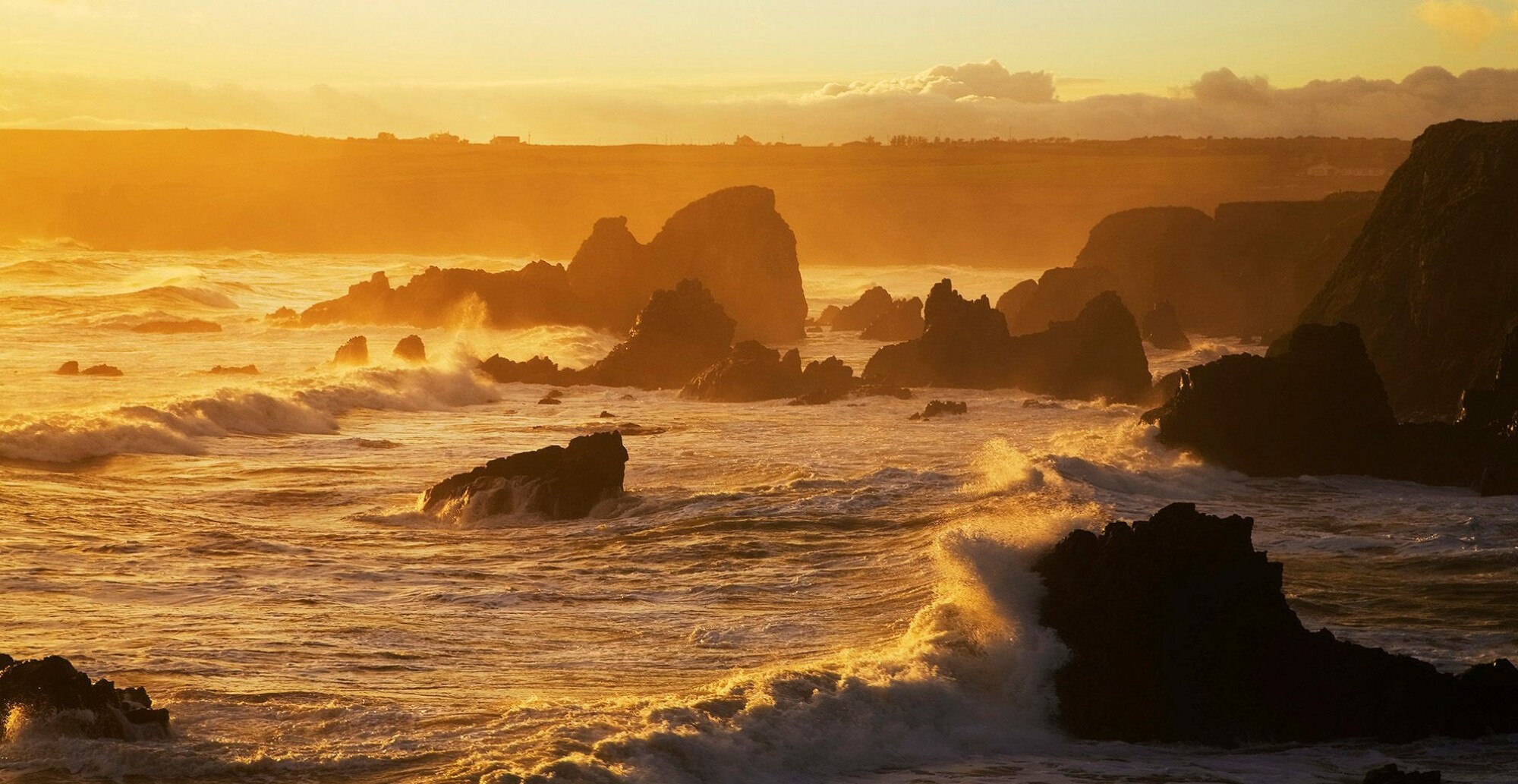Take a stroll along the streets of Ireland’s oldest city and discover the stories that bring Waterford’s Viking past alive.
Waterford is Ireland’s oldest city, dating back to Viking times over 1,100 years ago. It holds on to its Viking and Norman roots with its narrow winding streets, and even its name — vedrarfjord (“winter haven” or “windy harbour”).
We’ve compiled a short list of suggestions to help you get the most out of your 48 hours in the Viking City — with so many great things waiting for you in Waterford, there’s no better time to explore the city.
Home to medieval Lismore Castle and St Declan’s Cathedral (built in the 12th century), Waterford is steeped in history. However the city’s highlights centre around the Viking Triangle and Reginald’s Tower, the oldest civic building in the country — and the only urban monument in Ireland to keep its Norse or Viking name.
If that’s not enough to entice you to visit, Waterford is also renowned for some of the most spectacular beaches along this coastline. Tramore, Dungarvan, Dunmore East and the Copper Coast are just some of the gems to explore, and though the miles of sand or surf will draw you in, the scenery and the surroundings will be what keeps you here.
If you time it right, you might just catch one of Waterford’s famous annual festivals. Enjoy Waterford Spraoi International Street Arts Festival in August, the Waterford Harvest Festival in September, or get into the Christmas spirit at Winterval. There are many more fun events and festivals on offer throughout the year too.
WATERFORD CITY
Waterford City’s Viking Triangle is the cultural and heritage quarter of the city. It’s a tranquil place, characterised by narrow streets, atmospheric public spaces and an array of cultural and heritage attractions. Here you can connect with Ireland’s Viking roots, discover virtual reality attractions and explore the history of the world-famous Waterford Crystal. Visit the Bishop’s Palace, Waterford Medieval Museum and Reginald’s Tower, all part of the Waterford Treasures attractions to discover more about this fascinating city.
BEYOND THE CITY
Spend the morning touring the stunning Mount Congreve Gardens just outside Waterford City. Explore the estate (built in 1760) as you wander through what’s been described as one of “the great gardens of the world”.
No day at the beach is complete without some fish and chips; in Tramore, the place to go is Doolys. From here you can enjoy wonderful views of The Metal Man (a colourful cast iron statue near Newtown Cove) and the Guillamine Cove.
People in Waterford will tell you that the Metal Man (who stands pointing out to sea) chants in bad weather: “Keep out, keep out, good ships from me, for I am the rock of misery.” They’ll also say that if you hop around the Metal Man three times, you’ll be married before the year is out.
TRAMORE
Take a trip to the coast to visit the picturesque seaside town of Tramore. While there, get active with some surfing sessions, take a leisurely walk along Ireland’s longest beach, or explore the Lafcadio Hearn Japanese Gardens, built as a tribute to Irish writer Patrick Lafcadio Hearn.
THE COPPER COAST
Next, take to the road and discover the Copper Coast on a spectacular drive. This UNESCO Global Geopark has 25km (15 miles) of beautiful shoreline — explore its length to uncover cliffs, hidden coves and sea stacks. This fascinating region gets its name from the ancient copper mines that once covered the area.
Pull in at some of the scenic coves along the way to admire the view, or enjoy a stroll in Fenor Bog and wander around the ruins of Dunhill Castle. You could even hop on a bike and cycle along the Waterford Greenway while you’re here. Stop for lunch in the popular coastal town of Dungarvan where The Moorings serves up delicious, rustic fare, and take a tour through the Waterford County Museum.
ARDMORE
Continue along the coast to Ardmore Round Tower and Cathedral. While the monastic site was founded in the 5th century by St Declan, the round tower, early stone oratory and St Declan’s Cathedral followed in the 12th century; the round tower still stands impressively over the cathedral and oratory ruins. Explore the old church and monastic buildings on a self-guided tour, before embarking on a cliff walk to enjoy some of Ireland’s finest birdwatching vantage points.
